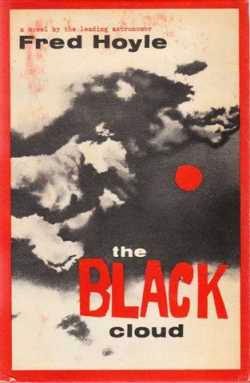Why he is interesting
Sir Fred Hoyle (1915-2001) is best known as an astronomer. His science fiction plays and novels are less familiar today. I am fond of Fred Hoyle since I am a scientist and an author of science fiction. Also, I met him once when he lectured at the Cambridge University Astronomical Society.Science
Sir Fred was a cantankerous Yorkshire man, who became a maverick outsider in the scientific community. His ideas were great, but he refused to accept evidence to the contrary.He was an opponent of the big bang theory for the origin of the universe and advocated the alternative steady state theory.
Perhaps his greatest scientific achievement was his explanation that the elements necessary for life on earth, such as carbon, arose from nuclear fusion in the stars. He was omitted from the Nobel prize awarded for this discovery, which went instead to his colleague William Fowler, who confirmed Hoyle's idea. Fowler gave Hoyle credit:
“The concept of nucleosynthesis in stars was first established by Hoyle in 1946. This provided a way to explain the existence of elements heavier than helium in the universe, basically by showing that critical elements such as carbon could be generated in stars and then incorporated in other stars and planets when that star "dies".”
Later, Fred Hoyle promoted, with Changra Wickramasinghe, the concept that life on earth began in space and spread through panspermia. They imagined viruses riding on comets.
Fiction
Fred Hoyle wrote science fiction, often with his son, Geoffrey Hoyle. He has diverse and interesting ideas, and although the protagonist is a man, the works include strong female scientists. Some of the endings are not happy (in more than one sense). Here are my comments on some of his works (published 1957-1982):The Black Cloud depicts a super-intelligent cloud of interstellar gas and the problem of communicating with it.
A for Andromeda (with co-author John Elliot) was a BBC radio show, a novel, and a film. A message from the Andromeda galaxy has instructions for a computer, which gives instructions for creation of living organisms, ultimately a woman. Andromeda Breakthrough is the sequel.
Rockets in Ursa Major began as a play and is a fun read. Today it would fit into Space Opera with two sets of alien spaceships. I enjoy the opening sequence with a message found on a lost spaceship:
"If this ship returns to Earth, then mankind is in deadly peril-God help you."
Into Deepest Space is the darker sequel.
Ossian's Ride is more of an adventure with SF components. Mysterious new technologies come from the barricaded Industrial Corporation of Eire.


No comments:
Post a Comment